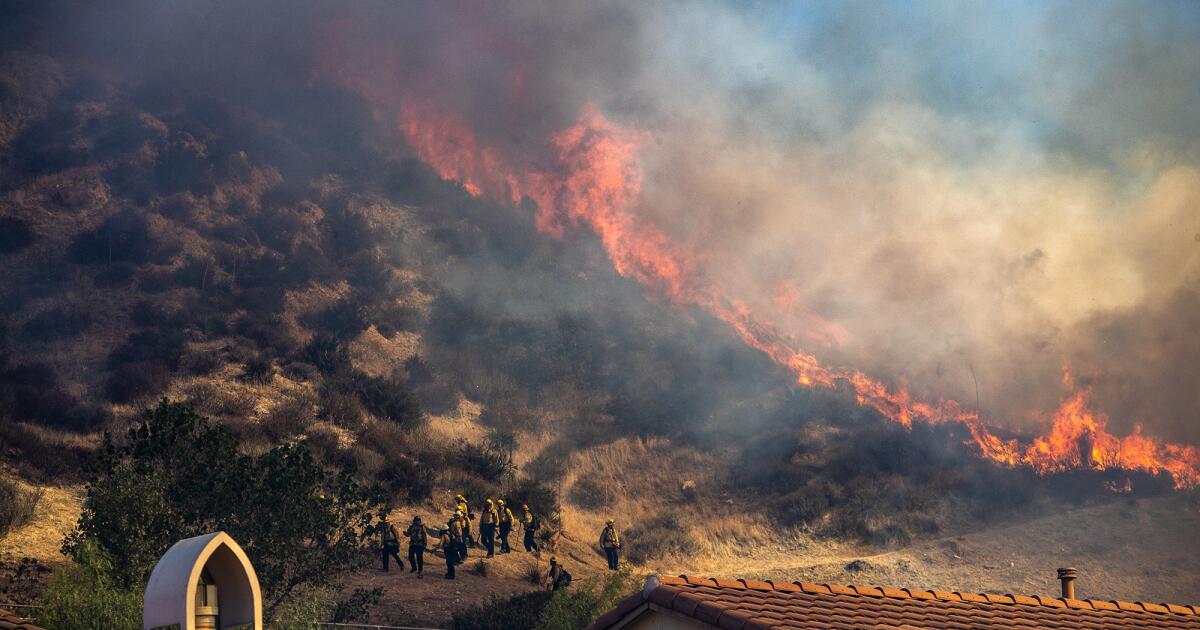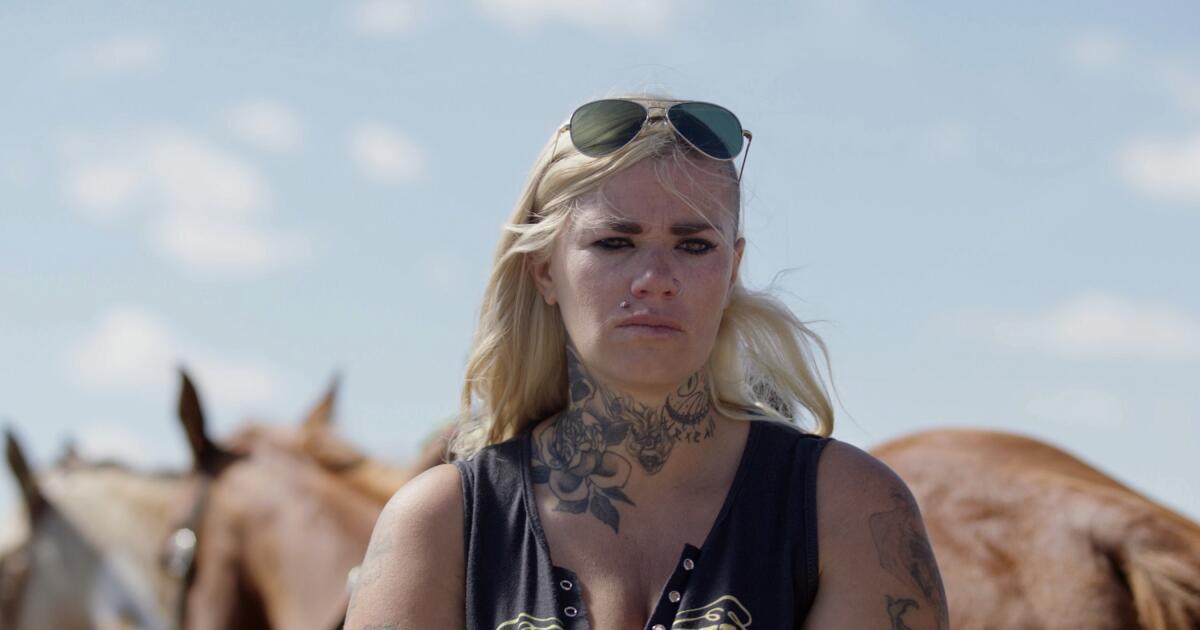U.S. claims Edison’s equipment ignited 2019 Saddle Ridge fire
Federal prosecutors sued Southern California Edison, saying its equipment ignited the 2019 Saddle Ridge fire, which burned nearly 9,000 acres and damaged or destroyed more than 100 homes in the San Fernando Valley.
The complaint filed in U.S. District Court in Los Angeles on Tuesday claims that Edison was negligent in designing, constructing and maintaining its high-voltage transmission line that runs through Sylmar. Equipment on the line is now suspected of causing both the 2019 fire as well as the Hurst fire on Jan. 7.
Edison has acknowledged that its equipment may have ignited the Jan. 7 fire, but it has been arguing for years in a separate lawsuit brought by Saddle Ridge fire victims that its equipment did not start the 2019 fire.
Lawyers for the victims say they have evidence showing the transmission line is not properly grounded, leading to two wildfires in six years. Edison’s lawyers call those claims an “exotic ignition theory” that is wrong.
In the new lawsuit, the federal government is seeking to recover costs for the damage the 2019 fire caused to 800 acres of national forest, including for the destruction of wildlife and habitats. The lawsuit also requests reimbursement for the federal government’s costs of fighting the fire.
“The ignition of the Saddleridge Fire by SCE’s power and transmission lines and equipment is prima facie evidence of SCE’s negligence,” states the complaint, which was filed by acting U.S. Atty. Bill Essayli.
“The United States has made a demand on SCE for payment of the costs and damages incurred by the United States to suppress the Saddleridge Fire and to undertake emergency rehabilitation efforts,” the complaint said. “SCE has not paid any part of the sum.”
David Eisenhauer, an Edison spokesman, said the company was reviewing the federal government’s lawsuit and “will respond through the legal process.”
“Our hearts are with the people and communities that were affected,” he said.
The 2019 wildfire tore through parts of Sylmar, Granada Hills and Porter Ranch, killing at least one person.
The fire ignited under a transmission tower just three minutes after a steel part known as a y-clevis broke on another tower more than two miles away, according to two government investigations into the fire. The equipment failure on that tower caused a fault and surge in power.
In the ongoing lawsuit by victims of the 2019 fire, the plaintiffs argue that the power surge traveled along the transmission lines, causing some of the towers miles away to become so hot that they ignited the dry vegetation underneath one of them. Government investigators also found evidence of burning at the base of a second tower nearby, according to their reports.
The lawyers for the victims say the same problem — that some towers are not properly grounded — caused the Hurst fire on the night of Jan. 7.
“The evidence will show that five separate fires ignited at five separate SCE transmission tower bases in the same exact manner as the fire that started the Saddle Ridge fire,” the lawyers wrote in a court filing this summer.
In that filing, the lawyers included parts of a deposition they took of an L.A. Fire Department captain who said he believed that Edison was “deceptive” for not informing the department that its equipment failed just minutes before the 2019 blaze ignited, and for having an employee offer to buy key surveillance video from that night from a business next to one of its towers.
Edison has denied its employee offered to buy the video. A spokeswoman said the utility did not tell the fire department that its equipment failed because it happened at a tower miles away from where the fire ignited.
Residents who witnessed both fires told The Times they saw fires burning under transmission towers on the evening of the 2019 fire and the night of Jan. 7.
Roberto Delgado and his wife, Ninoschka Perez, can see the towers from their Sylmar home. They told The Times they saw a fire on Jan. 7 under the same tower where investigators say the 2019 fire started.
The family had to quickly flee in the case of each fire.
“We were traumatized,” Delgado said. “If I could move my family away from here I would.”
The Jan. 7 fire burned through 799 acres and required thousands of people to evacuate. Firefighters extinguished the blaze before it destroyed any homes.

